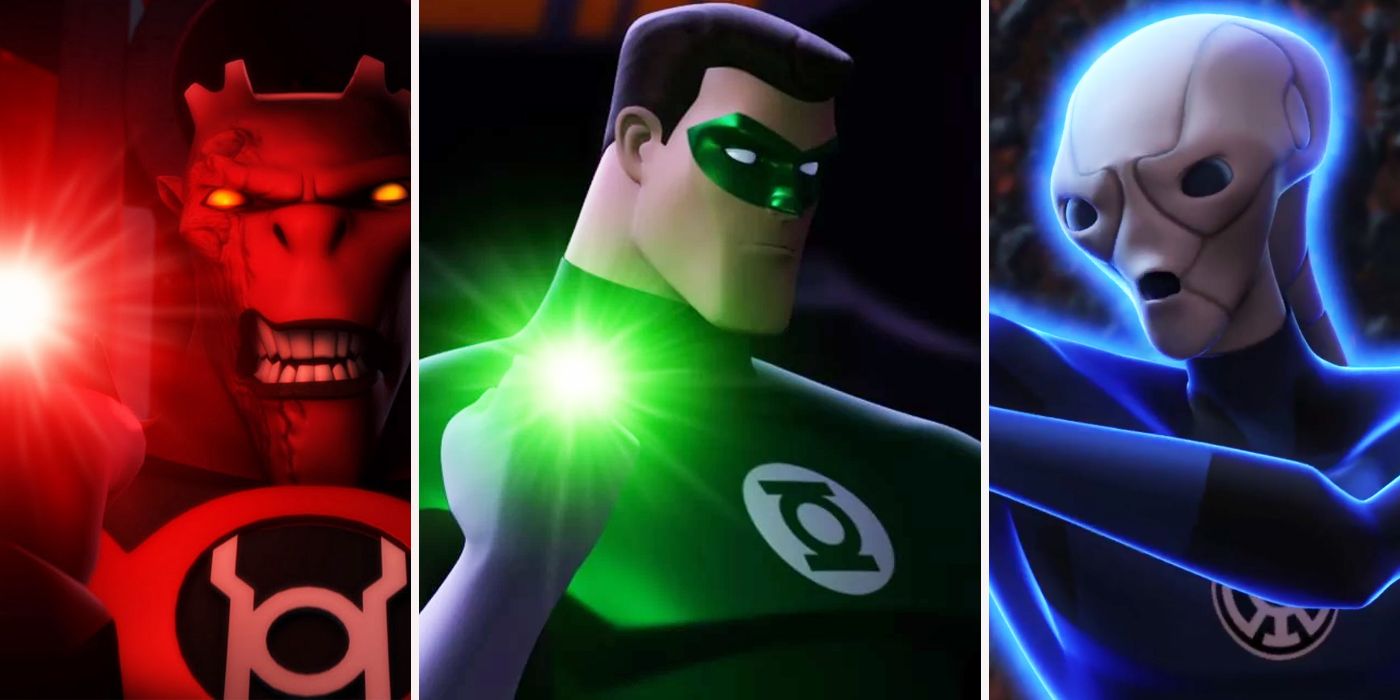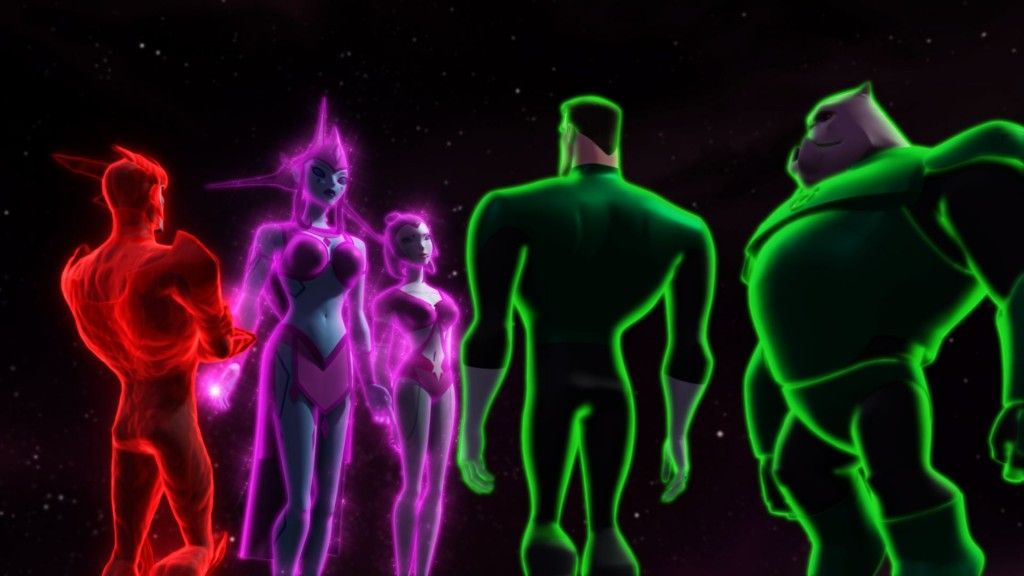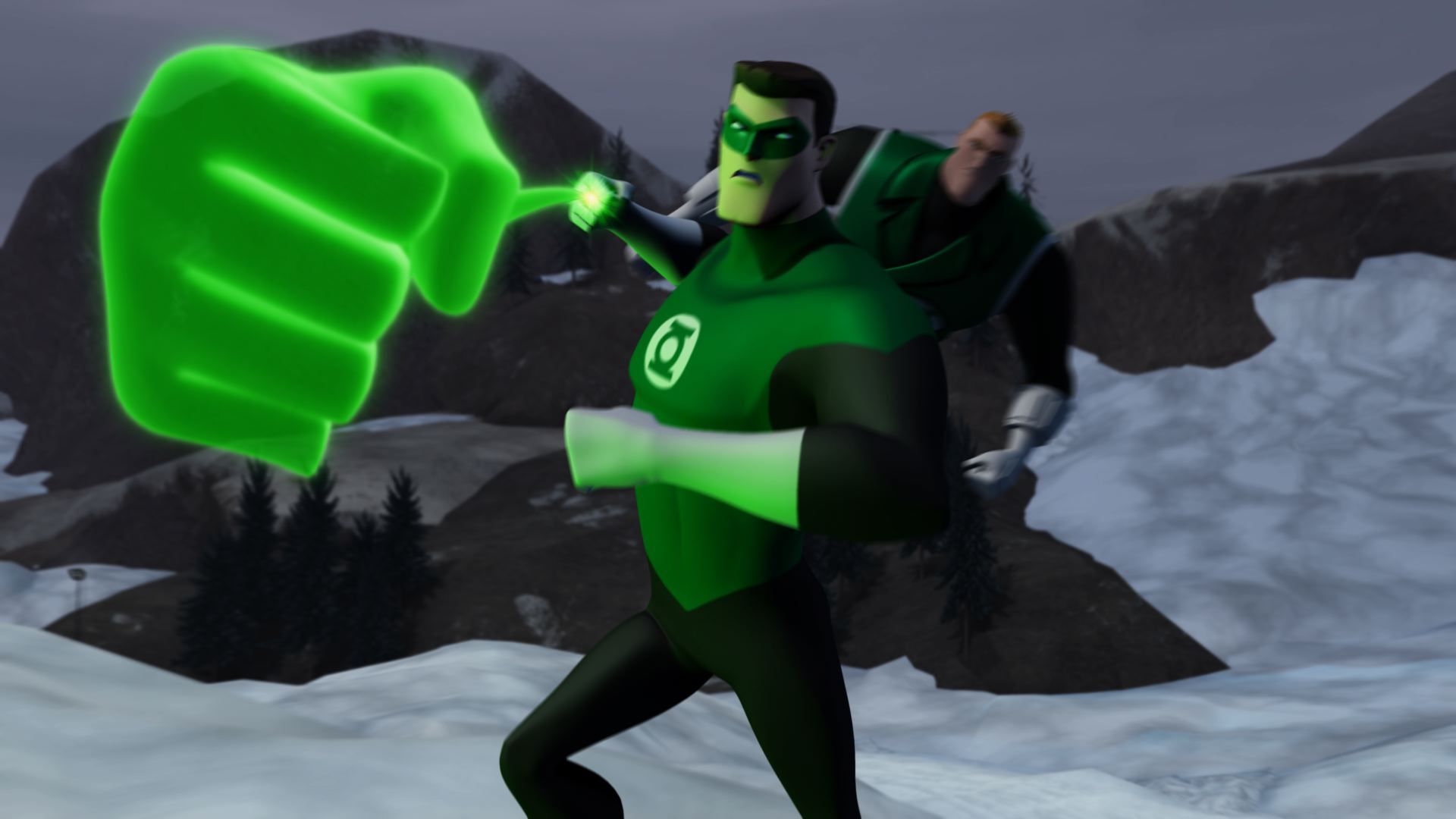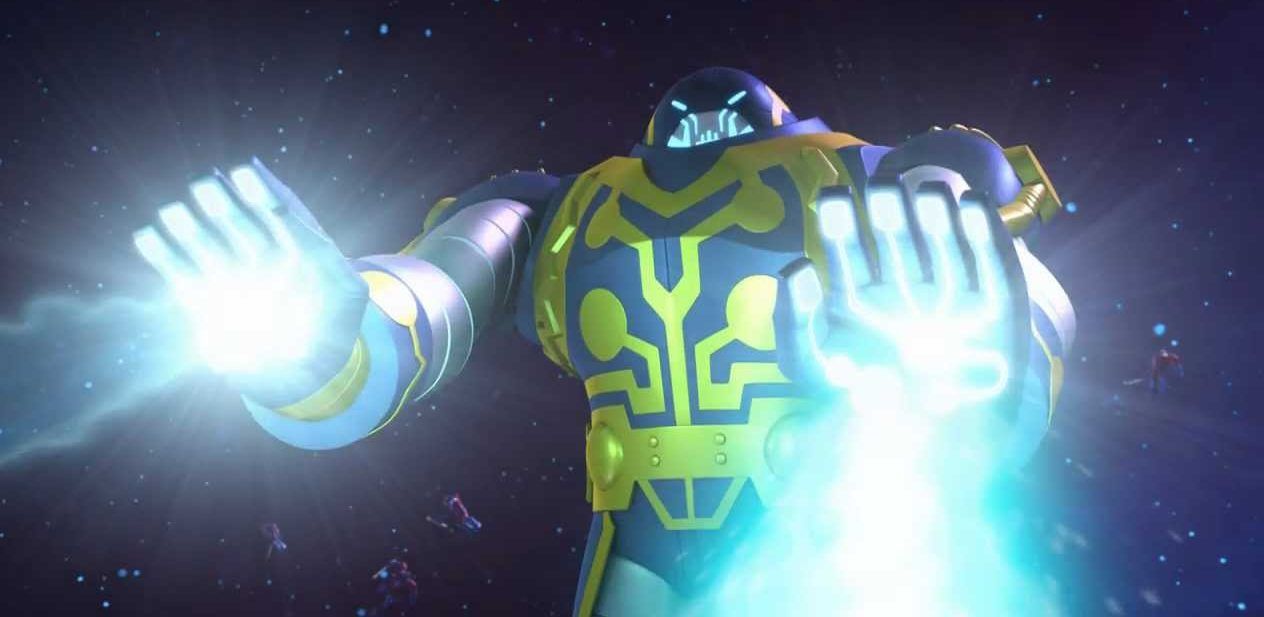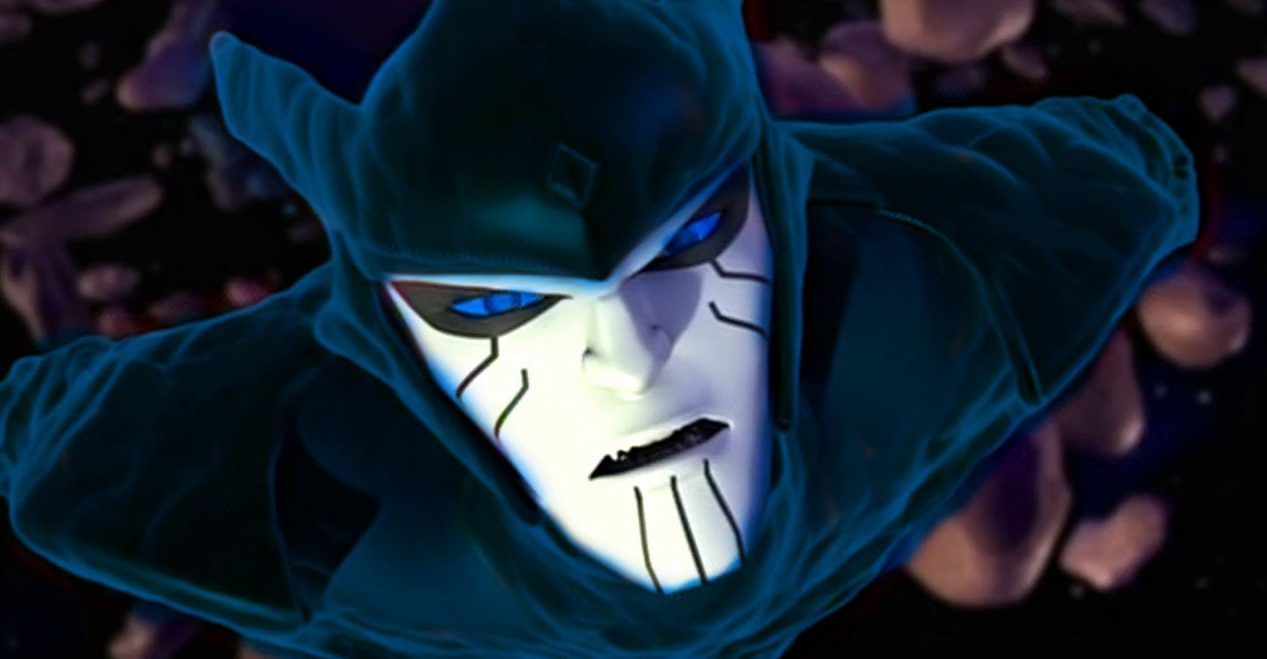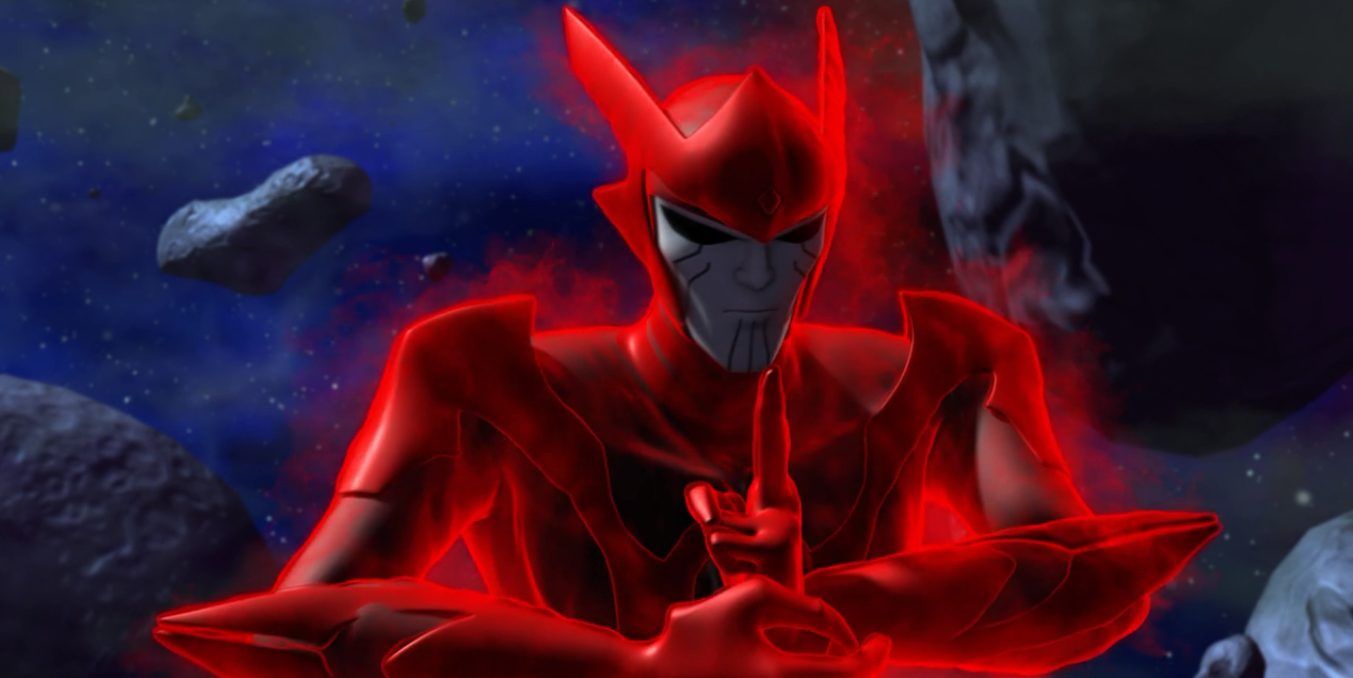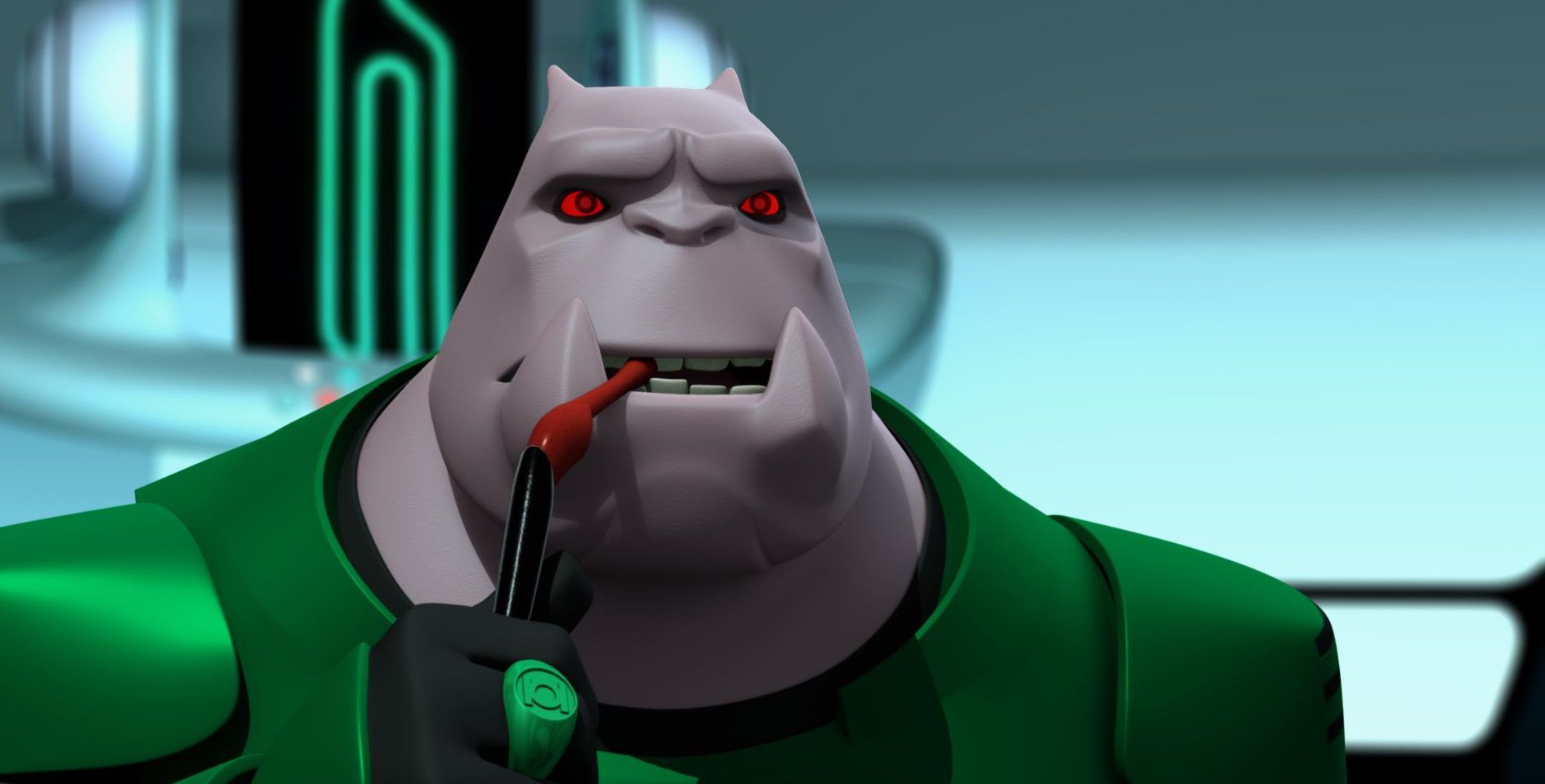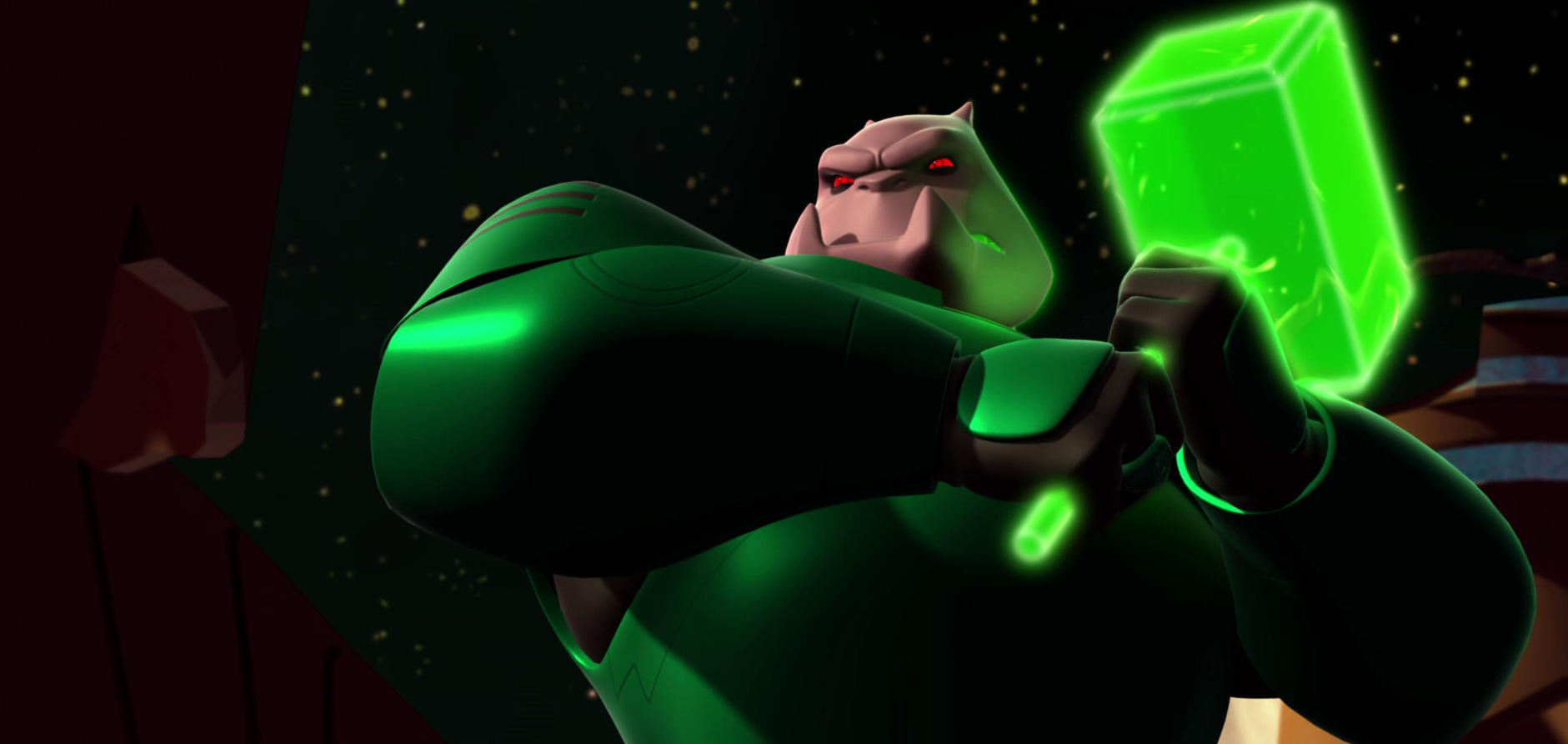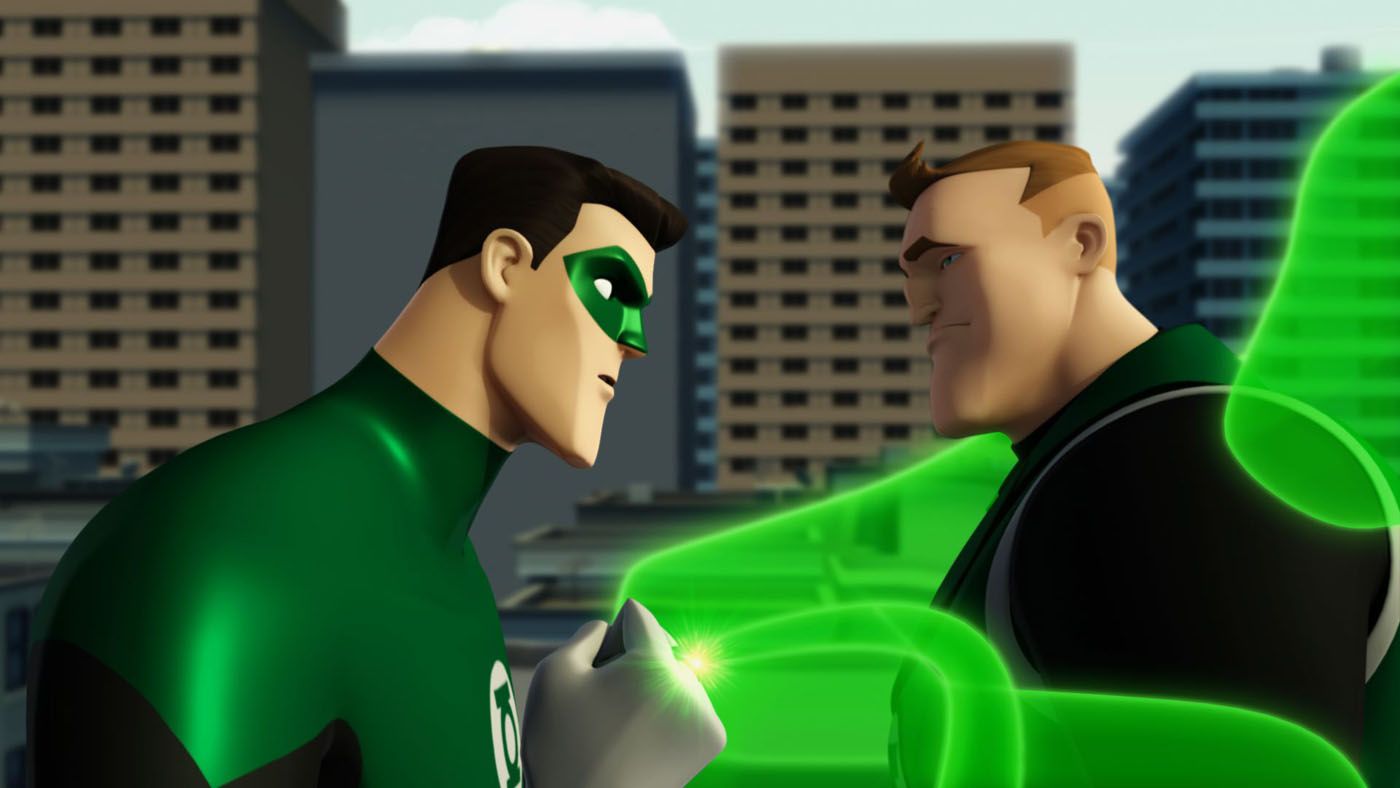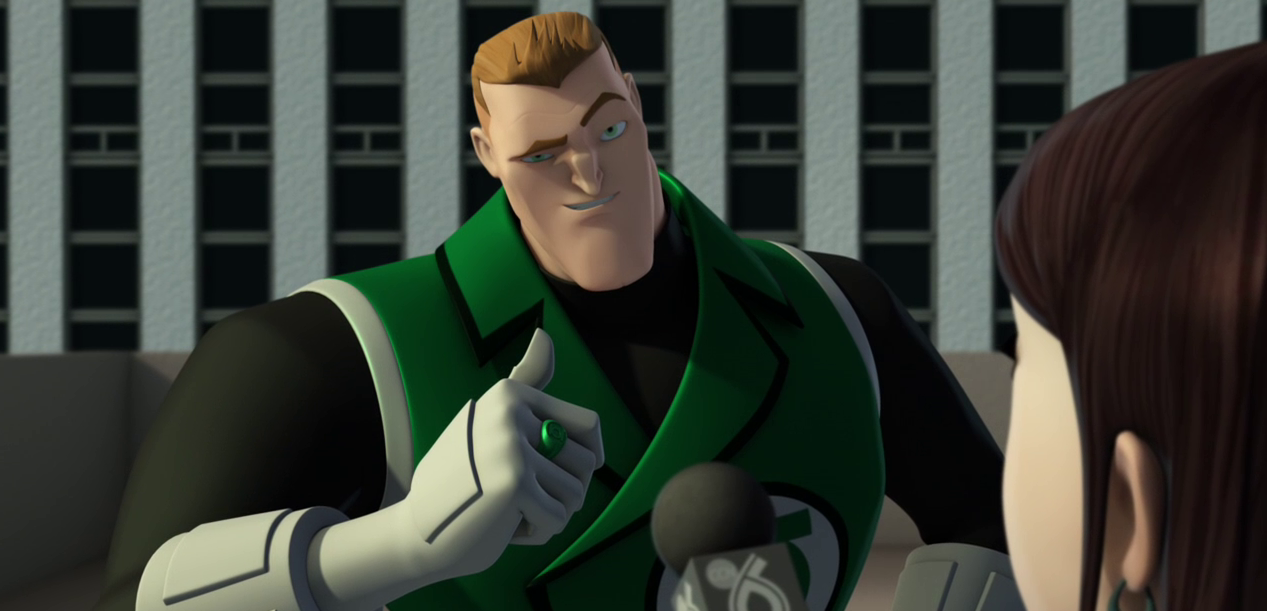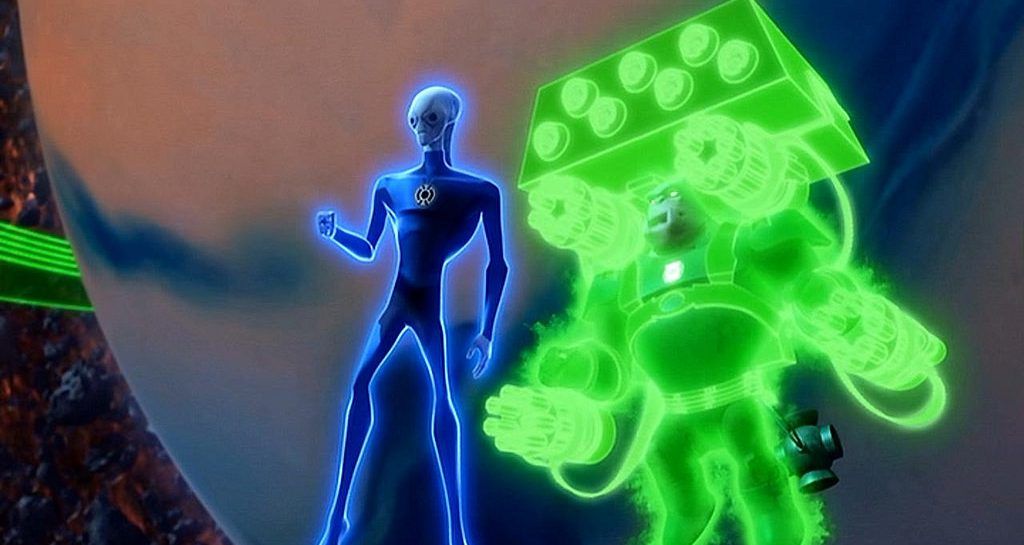It can be difficult to create art in a massive commercial industry. Companies are always looking for that brand synergy, and many still-budding shows have suffered for it. When the infamy of the Green Lantern film resulted in abysmal toy sales, the Green Lantern: The Animated Series show on Cartoon Network was canceled before it had a chance to go beyond its first season. Despite this, it's developed a decently-sized cult following over the years, even without having Netflix to save it from cancellation.
As Green Lantern has had little mainstream success outside of the comics, this show served as the introduction for many new fans. Coming from executive producer Bruce Timm, of DC Animated Universe fame, Green Lantern: The Animated Series boasts complex plots and gorgeous animation. Still, whenever something promising is cut down before it has a chance to flourish, its qualities are often overhyped by heartbroken fans. Green Lantern: The Animated Series is certainly a good show, and there are plenty of great aspects to it, but that's not to say there weren't some missteps along the way as well. So here are the seven things Green Lantern: The Animated Series did brilliantly, and the eight that it didn't.
15 WRONG: SINESTRO'S INCLUSION
The decision to have Hal be a seasoned Green Lantern was a smart one, as it kept the first episode from being bogged down by the tediously slow world-building that plagued the film. Which is why it's so bizarre that his archenemy, Sinestro, was still a good guy in his only appearance. That's not to say there was anything wrong with his actual portrayal. The design was solid, his actions were in-character, and Ron Perlman's voice fits him perfectly.
The mistake lies in that, since his one appearance only hinted at future villainy, all the threads set up were ultimately pointless. This isn't necessarily the writers' fault, as they likely weren't aware the show was going to be canceled when they were scripting this episode. Still, given that Hal's backstory was already told, they could've introduced Sinestro having already gone rogue and made his involvement much more satisfying.
14 RIGHT: EXPLORING THE OTHER LANTERN CORPS
Given the massive size of the superhero genre and the number of heroes occupying it, it can be hard to make semi-popular characters feel distinct when adapted to other mediums. By being set primarily in space, Green Lantern: The Animated Series had far more opportunities to do something unique. From unique alien species to space warfare, this show really had more in common with Star Wars than anything else in DC's wheelhouse.
One of the best examples of this element is how the other Lantern Corps were portrayed. The Red Lanterns, the budding Blue Lanterns, the Star Sapphires, and the (sole) Orange Lantern Corps were all uniquely defined and brilliantly realized. Tying the color spectrums to an emotional one allowed for a great deal of creativity in the comics, and it's impressive how much this show got right when translating this concept to the screen.
13 WRONG: IGNORING EARTH VILLAINS
Although having epic battles in space is something that makes Green Lantern distinct from other superheroes, ironically, most of his intergalactic villains are fairly similar. Nine out of ten times they're just evil ring-slingers. Although the show kept things interesting with killer robots and the occasional spider cult, the battles did get more repetitive as series went on.
Meanwhile, most of Hal's actually unique rogues are located on Earth. Hector Hammond, Doctor Polaris, Sonar, the Shark, Major Disaster, and the Tattooed Man are just a few of the foes that the Green Lantern would only encounter on his home planet. If the show wanted to keep things fresh, it wouldn't have hurt for Hal to return to Coast City to deal with a classic supervillain every now and then.
12 RIGHT: ATROCITUS AS THE BIG BAD
Although there would've been several good reasons to have Sinestro play a bigger part in the show, one of the counterpoints would've been that he would steal the spotlight away from the show's first major antagonist, Atrocitus. As the leader of the Red Lantern Corps, Atrocitus swore revenge against the Guardians for a mistake they made that wiped out his planet.
Voiced by the eerily fitting Jonathan Adams, Atrocitus' portrayal in the show was a marked improvement over the original interpretation. Whereas the comic book villain often felt like little more than a slobbering rage monster, the Atrocitus in the cartoon is far more nuanced and refined. A composed, yet still menacing threat, Green Lantern: The Animated Series did the leader of the Reds a great justice.
11 WRONG: USE OF THE ANTI-MONITOR
The Anti-Monitor is one of those villains that's sort of unadaptable. The story that spawned him is so dense and inaccessible that any version of him outside the comics is going to have to be extremely different. Outside of the name and the similar design, Green Lantern: The Animated Series' Anti-Monitor perfectly proved this point.
While this isn't a huge problem in and of itself, the way the show used the Anti-Monitor is. As a giant, planet-devouring robot created by a renegade Guardian, the Anti-Monitor is functionally just a rip-off of Marvel's Galactus. As if that weren't bad enough, the entity ultimately just felt like a larger version of the already-introduced Manhunters. Unoriginal and repetitive, the cartoon should've found a new intergalactic antagonist for the latter half of the season.
10 RIGHT: RAZER'S REDEMPTION
When the Red Lantern made just for the show, Razer, first appeared, it was hard to take him seriously. Along with having the "edgiest" name one could possibly think of, he ultimately felt like a very immature and aggravating antagonist. Yet, as the character became more of a regular ally to the Green Lanterns, he slowly became a more interesting presence.
In a way, the greatest tragedy of the show being cancelled is that we'll never get to see what happens next for this character. What would Razer have been like as a Blue Lantern? Would there have been a confrontation between him and Sinestro, whose belief that the Green Lanterns should kill their enemies is challenged by Razer's reformation? We'll never get to know for certain, but the fact that we care enough to ask these questions prove his creation was a smart choice.
9 WRONG: RAZER'S CHARACTER
Although Razer's heroic journey was enjoyable, his actual personality was another matter. When it was clear that he'd be teaming up with Hal, it was easy to see that this was the kind of character who was going to be obstinately making all the wrong choices. With every repetitive mistake, it was difficult not to find him infuriating. Well-written characters make mistakes, but when Razer's every action endangered the characters we already liked it didn't earn him any appreciation.
Then there's the matter of Razer's actual motivation. He became a Red Lantern because his wife died and he was mad about it? How original. Ultimately this kind of character had been done better in other shows. Razer is basically Prince Zuko without any of the heartbreaking pathos or interesting qualities. Although he was a unique addition to the cast, it's not surprising Razer hasn't made the transition to the comics.
8 RIGHT: AYA'S CONCEPT
One of the best things about the superhero genre is its limitless potential. The idea of emotionally-charged, hard-light wielding space cops is already crazy enough, but Green Lantern: The Animated Series took the concept to another level. The show dares to ask, "what would happen if you plugged that emotional-energy into artificial intelligence?" That fascinating idea is brought to life in another original character known as Aya.
Most stories about A.I. boil down to them trying to exterminate sentient life due to feelings being unpredictable (as seen in the Manhunters). Yet when a robot is infused with one of the most powerful of emotions, it opens up all sorts of possibilities. Even when Aya did eventually go rogue, it was due to having her feelings hurt for the first time. That's an interesting angle to tackle, and we likely would've seen plenty more had the show not been cancelled.
7 WRONG: AYA'S EXECUTION
Although Aya's character presented many interesting possibilities, the actual execution was very flat and unoriginal most of the time. Masculine A.I. being destructive while feminine A.I. being infantile creatures are two problematic tropes the show relies heavily upon, and doesn't do anything interesting enough with them to make it forgivable.
Her portrayal becomes even worse when you consider that she turned evil because she couldn't handle the emotions caused by Razer's uncertain feelings towards her. The element of Aya's wearing Razer's dead wife's face (and that they still fall in love) adds an extra creepy factor that this children's show didn't need. Although Aya offered plenty of interesting questions and opportunities, it's hard to argue this was a strong portrayal of the only female primary character.
6 RIGHT: KILOWOG'S VOICE
Kilowog definitely holds the honor of being everyone's favorite (non-human) Green Lantern. There's just something about his intimidating presence, yet non-frightening appearance that makes it difficult to dread seeing him. Given his popularity, it makes sense that Hal's trainer was one of the main heroes. Although there are many voice actors who could've brought life to this character, Kevin Michael Richardson proved to be a perfect choice.
This talented voice actor has taken part in pretty much every animated series ever made, and the reason is obvious based on the skill he demonstrates voicing Kilowog. Richardson infuses the Bolovaxian with the perfect balance of lovable, fierce, and (at times) heartbreakingly sorrow. The VA had similar success with Bulkhead in Transformers: Prime, so it isn't surprising he was chosen to play another bruiser who's impossible not to adore.
5 WRONG: KILOWOG'S DESIGN
Although the voice may have been a perfect fit for the character, the same can't be said about his design. While it makes sense to keep the Lanterns distinct from each other, the different uniforms are only really necessary for the humanoid ones. Kilowog's comic book costume may have basically been a carbon copy of Hal's, but the giant pink bulldog-esque alien didn't exactly need a unique suit to help him stand out.
While the armored costume is already unnecessary, the fact that they gave him red eyes and pointed fangs makes him far more intimidating than he needs to be. All of these elements come together to make the character far less visually adorable, which undermines a lot of his humorous or endearing scenes. Although Kilowog was still likable, the emphasis on making him look cooler detracted from his overall character.
4 RIGHT: INTRODUCING MORE HUMAN LANTERNS
Although Hal Jordan might be the definitive Green Lantern, part of what makes the Corps interesting is that he's not the only human perspective. Sure, the multitude of aliens are more than worthy of exploration themselves, but the Green Lantern identity as a "superhero" one will always fall onto humanity. As such, how different characters explore personal empowerment and dealing with fear keeps the thematic elements of this franchise interesting.
As such, it was smart of the showrunners to beginning introducing fans to the idea of multiple human Lanterns operating at the same time. Although we only got to see one new addition, it was fun to watch the contrasting styles between the two. It's a shame that the show was canceled before it had the chance to introduce any others, as there were plenty of great human ring-slingers to choose from.
3 WRONG: INTRODUCING GUY GARDNER
Out of all the Lanterns they could've added to the show's cast, Guy Gardner probably wasn't the best choice. Make no mistake, Guy is a great character when done well. Part of the problem is that his backstory depends on certain darker elements, such as having an abusive father, to have an interesting presence. This would have undoubtedly been difficult to translate to a children's show.
This especially feels like a poor choice given that the other Green Lantern best known to mainstream audiences is John Stewart, who many grew up watching in the Justice League and Justice League Unlimited cartoons. While Guy may have been Hal's successor in the comics, his actual presence in the show really didn't justify sticking to the continuity.
2 RIGHT: KILOWOG'S LAST STAND
While the best superhero shows don't live or die by their action scenes, it's inescapably a part of the genre. While Green Lantern: The Animated Series boasted many cool fights, nothing was more memorable than the battle between Kilowog and the Red Lantern Armada. As Hal and Razer went to request backup from the Star Sapphires, Kilowog stayed behind to face an entire fleet of Red Lantern ships by himself.
Kilowog fought valiantly, but ultimately the tide was turning against him. If not for the arrival of Saint Walker, the first Blue Lantern, and Mogo, a living planet and Green Lantern, it likely would've been Kilowog's last battle. Along with being visually stunning, what other show has an actual planet providing covering fire for emotionally-powered space cops? It's the kind of scene that separates this show from all others.
1 WRONG: HAL JORDAN'S CHARACTER
The theme of every human who's worn the rings is that they aren't fearless, they just have the willpower to overcome it. For Hal, his lone wolf behavior is caused by the fear he'll lose those he becomes close to, like how he lost his father. He's one of DC's most interesting characters and it made sense to make him the star.
Which is why it's unfortunate that the Hal in the cartoon is barely like the one in the comics. All the other characters talk about how Hal's a rebel who's only tolerated due to his skill, yet his actions in the cartoon barely match up with that assessment. He's not a bad character in the show, yet he has more in common with someone like Superman. Which would be fine, if this were Superman: The Animated Series and not Green Lantern: The Animated Series.

